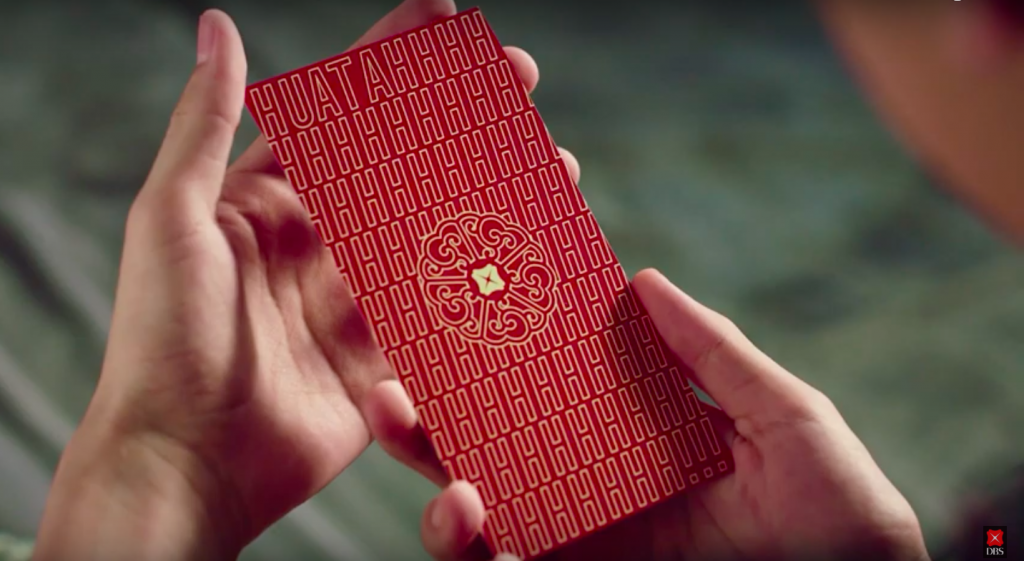There are many understandable reasons for this complaint, including unnecessary competition to financially outdo other couples, and having to deal with varying family attitudes towards money and tradition. It appears that most couples essentially feel a sense of unfairness that they can only grin and bear.
Still, for my newly-wed friends who are at least comfortably middle class, and who come from generally drama-free families, their resignation lacks any kind of bitterness.
Mark, who’s 35 this year, finds his cynicism around Chinese New Year decreasing as he grows older. This year is the second consecutive year he’ll be giving out ang baos, a gesture that’s not entirely obligatory for him, despite typical grouses among other newly weds.
“At first, [giving ang baos] was painful because you aren’t used to budgeting for them, but then you get into the swing of things. The tradition is important to some members of my family, and therefore it’s important to me,” he explains.
Besides, the specific amount of money matters less now; a $50-note used to mean more to him when he was 21.
Mark adds that his grandparents’ passing changed his family’s visiting routine, putting into perspective what the festive season really meant to him and how strong his family bonds were.
“Unlike previous years where it was a ‘given’ to gather at my grandparents’ place, plans for Chinese New Year are now a little less certain. Some family members have also stopped coming to gatherings,” he shares.
“It makes me wonder how I might recreate the magic for my children in the future.”
“It’s one of those things that I knew I would have to do because it’s tradition. Trying to resist it would be futile and just lead to pointless arguments,” he says.
In any case, he reasons, marriage is about sharing everything, from burdens to happiness. Naturally, this includes figuring out the best way to continue giving ang baos during financially tight periods, without losing ‘face’.
“My wife and I decided to split the total cost of ang baos exactly in half, which doesn’t make sense for me because my wife has easily three or four times the number of relatives, nephews, or nieces as compared to me. But this is one of those things you do when you’ve made a commitment to someone,” he explains.
Even though the ang bao money is still money in the end, James shares Mark’s sentiments towards the money given out: “It’s not a ton of money, so I’ll be fine.”

James, for one, considers two things when deciding how much to place into each ang bao. First, he thinks about what he used to receive growing up, and what he would appreciate.
“I don’t think ang baos should be about the money, but I do understand that people enjoy the material aspect of it. So if I’m going to do this, at least do it properly right?”
Next, he thinks about how much he can actually afford to give, both financially and in terms of whether people are going to complain to their parents that him and his wife were being “cheap”. Ultimately they’ve decided to standardise their giving, so there’s no favouritism shown, apart from their individual families. That is to say, parents and immediate siblings receive a lot more, but everyone else receives a lower, standard amount.
On the other hand, Mark pegs the amount in each ang bao he packs to the amount of money he received from that person’s family before he was married.
“Having to give ang baos made me more conscious of how much I had previously received. All of a sudden, I remember with great clarity how much money I got from each relative. If I’m going to be giving ang paos to my nephews or nieces, I take note of how much their parents had previously given me. Then I adjust my ang baos accordingly,” he explains.
Basically, what he means is, if you think people don’t remember how much you give in your angpow, they do.
Regardless, Mark estimates $12 to $20 per ang bao is a decent amount that wouldn’t make one look cheap nor burn a hole in the pocket.
To me, this is also an easily manageable amount for math noobs who struggle with having to withdraw the exact amount for every ang bao.
She is also … not very good at math.
With the amount of ang baos she has to pack, honestly it would make more sense just to PayLah! everyone. It would save time and paper, and ensure less hassle or error in giving each relative the accurate amount.
Yet I know traditions aren’t always practical. Part of the meaning behind giving and receiving ang baos is the physical gesture itself. It can be heartwarming to hand a younger relative an ang bao, see their eyes light up, and know you were the reason for their unadulterated, albeit fleeting, happiness.
For more traditional families, these moments are ultimately still a fun and important way for the older and younger generations to bond with each other. But in Cheryl’s case with her huge family, what’s equally important is that she has a way to streamline her ang bao giving process and minimise stress.
So I suggest to her the DBS QR ang bao, a function on the DBS PayLah! app that I recently came across. All Cheryl has to do is ‘load’ a cash value between $2 to $999 onto each physical QR ang bao, which contains a unique QR code and serial number. Then she gives the QR ang bao to her relatives, who can instantly receive the loaded amount by scanning the QR code on the ang bao with their DBS PayLah! app.
All in, the QR ang bao seems to be a nifty way to retain the physical act of giving and receiving an ang bao while eliminating the use of cash. It also ensures that the meaning of the gesture isn’t lost nor reduced to the banal act of keying in a figure into an internet banking website.
While it’s convenient to assume that my friends are optimistic about the ang bao giving process because they simply haven’t been doing it for years, it’s clear they also look at the custom as more than a transactional gesture. It gives me hope that not all millennials are as jaded about Chinese New Year and its enforced traditions as I thought.
In the end, perhaps being able to derive meaning from a conventionally empty, aggravating practice is what it means to truly make your own happiness, prosperity, and peace.
The DBS QR Ang Baos are valid for use from 25 January 2019 to 15 March 2019, and funds not redeemed by 15 March 2019 will be refunded to the givers.
Two sets (in packs of eight) will be distributed to customers at most full-service DBS/POSB branches or POSB Pop-Up ATMs island-wide, subject to availability.
Remember, it is possible to embrace technology without doing away with tradition.







